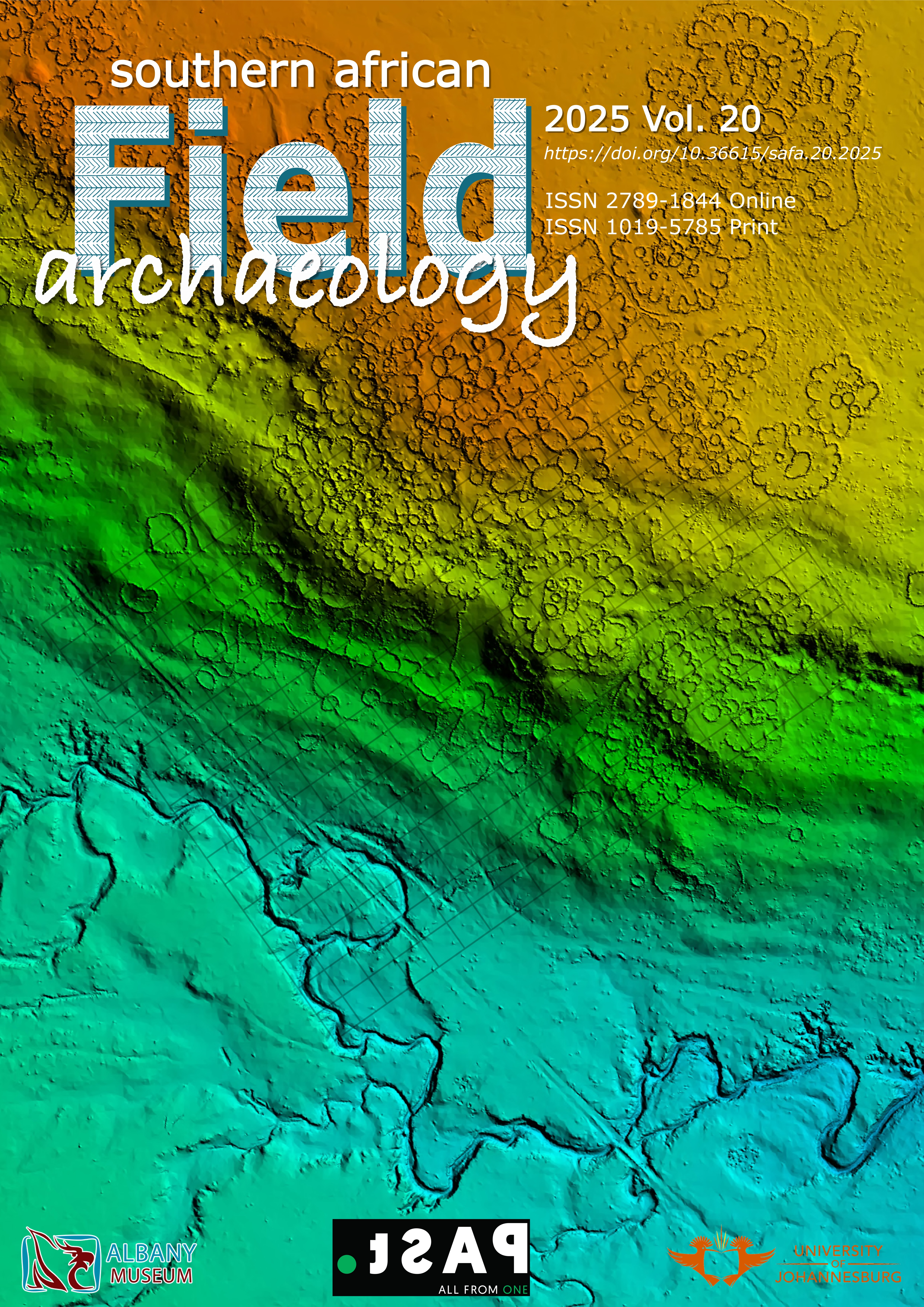Archaeological survey of the Modder River dongas, Free State, South Africa
Main Article Content
Keywords
Pleistocene, South Africa, Modder River, Middle Stone Age, Later Stone Age
Abstract
The semi-arid grasslands of the Free State Province of South Africa have produced the earliest evidence of the presence of Homo sapiens in the subcontinent, together with an extensive Pleistocene palaeoenvironmental record based on fossil assemblages. However, the known Middle Stone Age (MSA) archaeological sites in the Free State are limited to a few major localities that cannot be integrated into a unitary narrative, thus hindering our understanding of human cultural evolution in the central interior of South Africa. Here we report the results of a survey of the dongas of the Modder River aimed at documenting new localities embedded within its alluvial terraces. We identified 43 previously unknown archaeological areas spanning the Late Pleistocene to Holocene based on the regional chronology, of which the majority are MSA sites. Four of the latter include artefacts in situ and thus hold potential for excavation and absolute dating by trapped-charge methods. The occurrence of a specific lithic type at six sites along the course of the river highlights a pattern in the occupation of the region during Marine Isotope Stage 5, which confirms the importance of the grasslands of the central interior for the characterisation of the spatiotemporal distribution of human groups in the open landscape during the MSA.






